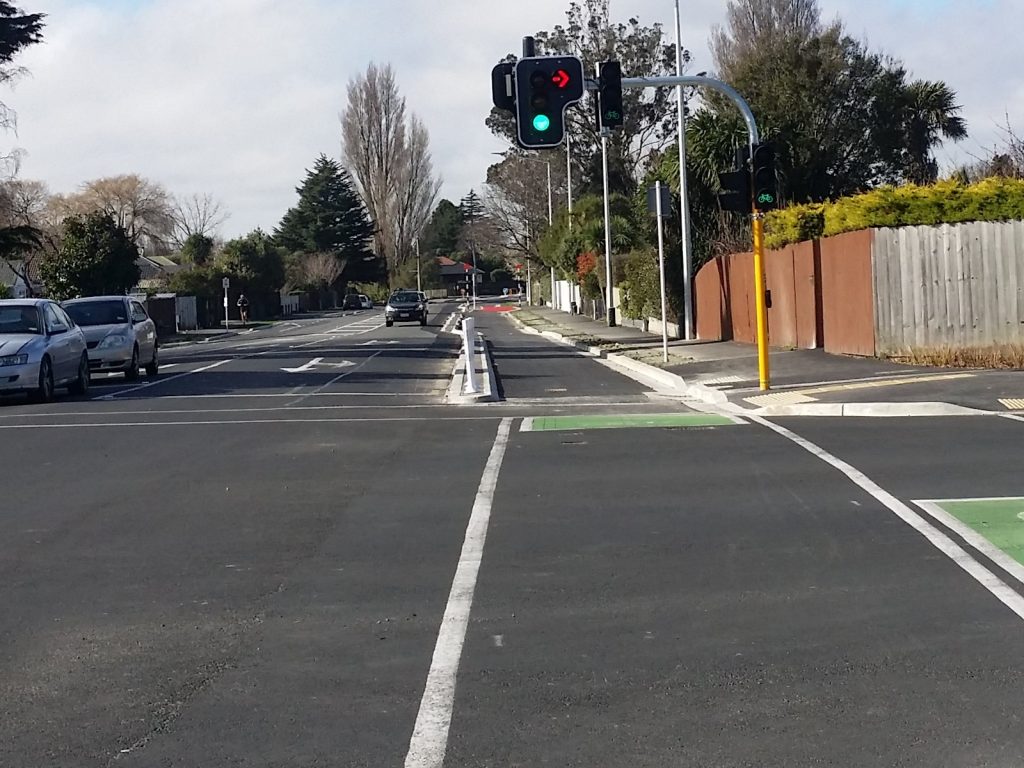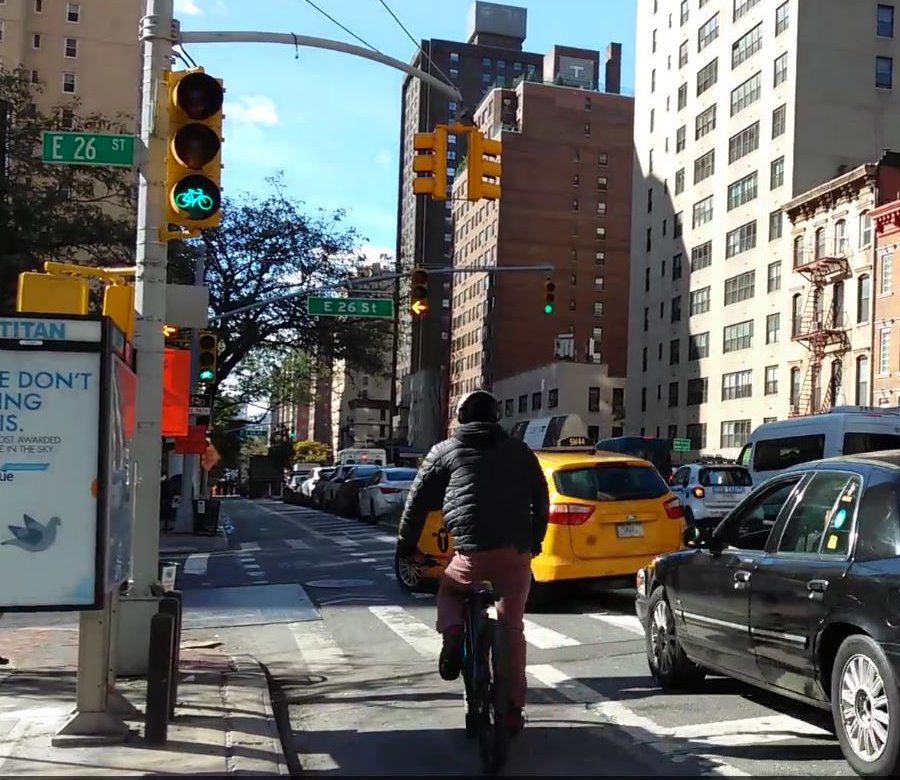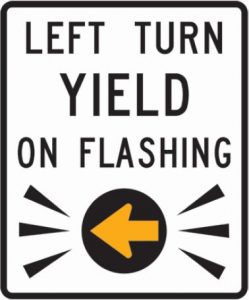The new separated cycleways have given a dramatic transformation to our city cycling network. Lots of people are now enjoying these new connections around town. However, if there was one particular thing that is causing ongoing angst for all parties on the road, it would have to be the protected cycle phases at traffic signals.
-1024x768.jpg)
You have probably come across this feature: typically cyclists get to go first with through-traffic, while turning traffic is held back. Then cyclists are stopped so that turning traffic can go. This designed to improve safety by separating conflicting movements in time. There’s just one teensy practical problem that often shows up; either:
- Turning motorists are held back while there are no cyclists present (sometimes also holding back through-traffic behind them), or
- Cyclists are held back while there are no turning motorists present (this is particularly an issue along the Tuam / St Asaph corridors where it is difficult for many riders to keep up with the start of the synchronised “green wave”).
-1024x640.jpg)
In both cases, the frustration with this situation can lead to road users ignoring the signals and going anyway (usually after checking the way is clear first). What follows is invariably some accusations across social media and the like of red-light running “law breakers”.
So how has this issue come about? The problem stems from a current little legal anomaly over what is deemed a “roadway”; as explained previously, a roadway is “that portion of the road used or reasonably usable for the time being for vehicular traffic in general.” At present, the general consensus is that a separated cycleway is not a roadway in NZ because general traffic can’t use them (unlike a painted on-road cycle lane that a motorists could still drive over).

Why is this important? Because an “intersection” can only be between two or more “roadways”, so anything that isn’t a roadway (like when a separated cycleway crosses a side road) isn’t subject to the standard intersection give way rules, such as “turning traffic should give way to through traffic”. Without that protection, separated signals phases are required to legally control the two conflicting movements.
This might be fine where there is a steady enough stream of cyclists and/or turning traffic to keep separate. But when the two movements are a bit more intermittent, that separation in time starts to get a bit grating.

What would be nice is to have a way to let turning traffic go after a brief initial cycling head-start while still requiring them to give way to any through-cyclists. This is not too dissimilar to the current rules around pedestrians at traffic signals; motorists are allowed to turn once any red arrows disappear but, regardless of the ‘compliance’ of any person crossing the side road, they still have to give way to them.
An interesting idea I saw in New York a few years ago was the concept of a flashing yellow arrow along some of the city’s new protected cycle route streets. After a red arrow had been displayed, the signal switched to a flashing yellow one, which allowed turning traffic to move but reminded them that they still had to watch for any pedestrians or cyclists crossing their path.

My colleague Megan also came across these during her study tour of North America in 2016, and there is a bit of interest to try to get these trialled here. In NZ, when flashing yellow signals are displayed (often for maintenance reasons), normal give way rules apply; we also have the ability to use traffic signs to override signals. You can read a bit more about the concept from a recent traffic signals workshop presentation. Christchurch and Auckland are now interested in trying to get some on the ground (assuming they can get around the legal technicalities – changing the definition of “roadway”would solve a lot of problems for starters…).
 A flashing yellow arrow could also benefit pedestrians who, although they already enjoy legal precedence over turning traffic, could probably do with an additional reminder to motorists of their obligations.
A flashing yellow arrow could also benefit pedestrians who, although they already enjoy legal precedence over turning traffic, could probably do with an additional reminder to motorists of their obligations.
An interesting alternative idea is to display a flashing yellow cycle signal instead. Would putting the onus of caution on cyclists be a better solution?
Protected cycle signals are currently a double-edged sword in providing safe separation of users but with the frustration of having to wait sometimes. Flashing yellow arrows might be one way to resolve this dilemma – if we can get them implemented in NZ…
What do you think about protected signal phasing along cycleways?

During off peak times it would certainly be quicker for everyone if the onus for safe crossing was on the cyclist. I am happy to wait for a gap in the traffic or to let vehicles go first rather than make everyone wait for the lone cyclist. However its nicer to know that all vehicle drivers, myself included are learning to be more observant, cautious and patient regarding cyclists. We want all age groups to be able to be able to enjoy the security of the cycle paths and to know that they can always proceed or cross safely.
The timing is frustrating. Having what seems like 10seconds to cycle through a green while the car gets the whole remaining green light for turning which feels like 45-1 minute in some places while I sit and wait during a perfectly good green.
Almost feels slower taking the ‘safer’ more ‘efficient ‘ cycle way for me. I believe I should continue to just ride on the road as a Road User as per usual and not bother with the cycle lanes. I like the flashing yellow option and would be happy for this to be implemented.
Ummm theres more cars …hence more time
flashing yellow for the car would be brilliant. it makes sense for turning vehicle to give way to the straight ahead vehicle like a standard intersection. Sooner the better then I can use the cycle way rather than riding in the road lane to get the green light
I don’t use the cycle lanes and stay on the road for just this reason. That said I was fine with the road layout prior to the changes.
This is the most frustrating thing I find about the new cycleways, and I was just thinking why they don’t implement a 2s headstart for bikes then either cars are on a giveway, or bikes are on giveway. Hopefully we will see something trialed along these lines.
Last time I went up Tuam there is one set of lights that lets the cars go before cyclists. I don’t know why, they have that inconsistency.
I think that’s at Montreal where it’s linked with letting left-turners catch the tail of the green wave north. Understandable but, yeah, it does keep you on your toes…
Agree with the suggestion of a green “head start” for cyclists then some flashing yellow “everyone go, but keep and eye out for each other” signal after. Duty of care should alsways fall a little more on the cars, but that also requires us cyclists to take care, too.
Tinkering with the problem is never going to solve the issue or reach an agreement with all parties. Seems to me we created a huge issue after researching, consulting and visiting other countries and still managed to get it wrong the new light bulb joke “how many traffic lights does it take to cross a road in Christchurch”.
From my own personal experience being on the left of traffic at the left hand turn or proceeding straight can be exceptionally hazardous. Made more so by the dedicated lanes as this train’s cyclist’s behavior to think they are safe even on standard intersections.
I choose to merge with traffic before the intersection and let traffic proceed as per the queue as it’s only a matter of time when another person will be killed by a vehicle turning left and the driver not seeing the cyclist. It may slow me down a little however after seeing a number of near miss incidents has convinced me to change.
Just my thoughts I may be wrong but I didn’t use any consultants or engineers reports to get it wrong if I have.
Red turning arrows also apply to cyclists: TCD Rule 3.3 (3)
While a red signal in the form of an arrow is displayed,—
(a)
a driver facing the signal must not enter the controlled area to proceed in the direction indicated by the signal
The red signals are facing cyclists, so therefore they cannot turn left.
This shows the infrastructure we are building does not make sense with our current legislation. In essence, our engineering is moving faster than legislation can keep up. We need to make large changes to legislation to continue to allow safe cycling infrastructure to be implemented, without loopholes that need to be closed in unintuitive, and frustrating ways.
Technically the red arrow is facing the main roadway, not the separated cycleway. So if you’re biking on the roadway then you can’t turn left, but if you’re in the separated cycleway and have a green bike signal then you can go. You’re not the first person to ask that question though and yes, there are a number of little legal gaps that still need to be addressed by the existing traffic legislation.
I support the flashing yellow option for bikes, i.e. the same as now with bikes getting a green signal first if detected, but when the cars have their left turn arrow, bikes get a give way signal to proceed if it is safe to do so. The reason I don’t favour the same for cars is that as a driver, cars have such poor visibility in the rear three quarter view that it would be unsafe for cyclists. Cyclists have an excellent view of the surroundings.
Something needs to change. Biking up Strickland-Antigua recently for the first time in a while was such a frustrating experience that it almost had me favouring the car for future trips. I had never felt like more of a second class road user than o that trip. I like to *ride* a bike not to stand with it for half the time with heavy traffic passing just in front of me – and I don’t like being forced to choose between standing there like an idiot in front of a clear intersection or breaking the rules. Bikes are a mode of transport and need to be efficient as well as safe.
The solution I use to this now is that if the left turning lane is clear but the bike light is red, I simply join the car lane and go through on the car signal then rejoin the cycle lane on the other side. I assume that’s legal because we’re allowed to choose where we ride. It achieves the same thing as a flashing arrow because you can only do it if the left turning lane is clear.
I disagree that there is a problem with “cycle path” (defined a separated area for cyclists – there is no definition of “cycleway”) versus “roadway” at an intersection. If the area a cyclist is riding in is no longer separated from other traffic then they are no longer on a cycle path and are back in the roadway, so the roadway rules apply. Therefore, regardless of where they have come from, turning traffic travelling in the same direction as the cyclist must give way to the cyclist.
For me, what is missing from the Road User Rule, is clause describing what can use a “cycle path”. It can not be defined as a cycle lane as it is not part of the roadway and so it seems there is no way of legally restricting a cycle path to just cyclists. So from what I can tell, anything that can fit onto the cycle path, including motorcycles, can use it (but not park on it).
So I think there does need to be a good look around the definitions of the area cycles ride in, including through intersections, but not because of the cycle path/roadway issue at intersections.
An interesting interpretation of when the roadway applies, except that the give way rules apply when multiple roadways intersect – what is the second roadway?
I just read in the Road User Rule clause 3.2(1)(b)(iii) While a green signal in the form of a disc is displayed,—a driver facing the signal, including a driver turning left or right, must—give way to motor vehicles and cycles lawfully proceeding straight ahead. So, regardless of being on a cycle path/cycle way or in a cycle lane, a turning vehicle must give way to the through cyclist. So the only reason for stopping cyclists is to separate teh two movements.
Note that I found this while looking at the Gazzette Notice allowing the [TURNING TRAFFIC GIVE WAY TO CYCLISTS] sign form November last year.
The critical phrase is “lawfully proceeding”; If a cyclist is coming from a separated cycle path, what signal is telling them they can go? It would have to be a green cycle signal facing them because a standard green disc doesn’t apply to them. So if there isn’t a green cycle signal then it could be argued that they were not lawfully proceeding.
I’m only aware of the TURNING TRAFFIC GIVE WAY TO CYCLISTS sign being used at non-signalised intersections; struggling to think of any examples where it has been used at a signalised one?
Yes, this is all petty semantics of a vague set of regulations, but that’s what lawyers would refer to if there was a crash. Hence the preference for some clarity on the role of a separated cycle path and the rights of its users.
You have to put your safety before the law sometimes if complying with the law means if someone else screws up and hits you, you come off second best.